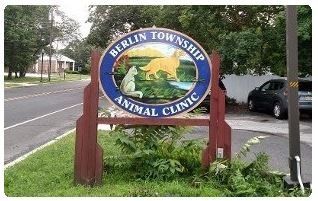Veterinary Examinations in West Berlin, NJ
Ensure your pet is happy and healthy and bring them in for regular checkups at Berlin Township Animal Clinic. Based in West Berlin Township, New Jersey, we specialize in complete examinations and all manner of veterinary services.
Vaccinations
Our veterinarians will recommend vaccinations specifically for your pet based on his/her needs, lifestyle, and risk of disease and exposure. Vaccinations have improved worldwide, as has our understanding of them, and are safer than they have ever been.
Annual Examinations
Let us give your pet a complete physical examination and answer any questions you have about its health. We first check the weight, compare it to prior recorded weight, and determine a body condition score.
Next we examine the ears, and then palpate for lymph nodes of the head, neck, and other areas of the body. We will auscult (listen to) the heart, and evaluate its rate, rhythm, and sound. Heart disease is common in older pets and detecting the problem is the first step in controlling it.
We then palpate the abdomen, paying attention to organ size, texture, and placement. Evaluating mobility or lameness is the best way to determine if there are any joint problems, which are common in older pets. We also assess the coat and skin, looking for signs of irritation and growths.
EYE EXAMINATIONS
During eye examinations, we pay close attention to the eyelids, conjunctival color, corneal or anterior chamber changes, as well as lens changes. Eyelid tumors are common, and can easily be removed with surgery.
Changes in the cornea may indicate chronic irritation or lack of proper tears. If there are changes in the anterior chamber, the iris, or the lens, we can detect that and possibly prevent glaucoma from developing.
Next we examine the ears, and then palpate for lymph nodes of the head, neck, and other areas of the body. We will auscult (listen to) the heart, and evaluate its rate, rhythm, and sound. Heart disease is common in older pets and detecting the problem is the first step in controlling it.
We then palpate the abdomen, paying attention to organ size, texture, and placement. Evaluating mobility or lameness is the best way to determine if there are any joint problems, which are common in older pets. We also assess the coat and skin, looking for signs of irritation and growths.
EYE EXAMINATIONS
During eye examinations, we pay close attention to the eyelids, conjunctival color, corneal or anterior chamber changes, as well as lens changes. Eyelid tumors are common, and can easily be removed with surgery.
Changes in the cornea may indicate chronic irritation or lack of proper tears. If there are changes in the anterior chamber, the iris, or the lens, we can detect that and possibly prevent glaucoma from developing.
Spaying and Neutering Your Pet
Spaying (ovario-hysterectomy) is the surgical removal of the reproductive organs (ovaries, uterus, fallopian tubes) of the female animal. Neutering (orchiectomy or castration) is the surgical removal of the reproductive glands (testes) of the male animal.
Cats and dogs should be spayed or neutered by 6 months of age. It is also advisable for older animals, as long as they are in good health. A licensed veterinarian performs all sterilization surgeries under general anesthesia, with pain medication given before and after procedure.
Cats and dogs should be spayed or neutered by 6 months of age. It is also advisable for older animals, as long as they are in good health. A licensed veterinarian performs all sterilization surgeries under general anesthesia, with pain medication given before and after procedure.
Dental Care
We examine the teeth, gums, and other oral structures. Your pet's teeth should not have tartar buildup, and its breath should be relatively fresh. The gingiva should have a healthy appearance and not bleed when touched. Each tooth should be firmly seated and have no periodontal bone loss. We also check for oral tumors, and evaluate your pet for membrane color, which gives us information about the circulatory system.
Dental diseases are common in all pets, but seem to worsen with age or neglect. They can provide a route for bacteria to enter into the blood stream, leading to heart disease, eye infections, sinus infections, kidney disease, anorexia, and many other problems. Dental care is available to pets of all ages, and is important to maintaining overall good health.
Dental diseases are common in all pets, but seem to worsen with age or neglect. They can provide a route for bacteria to enter into the blood stream, leading to heart disease, eye infections, sinus infections, kidney disease, anorexia, and many other problems. Dental care is available to pets of all ages, and is important to maintaining overall good health.







